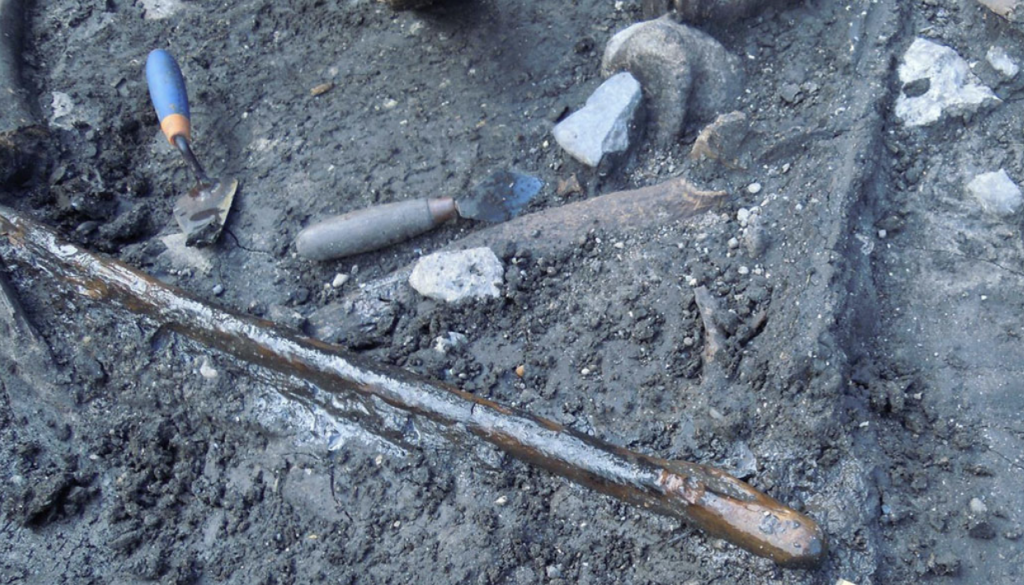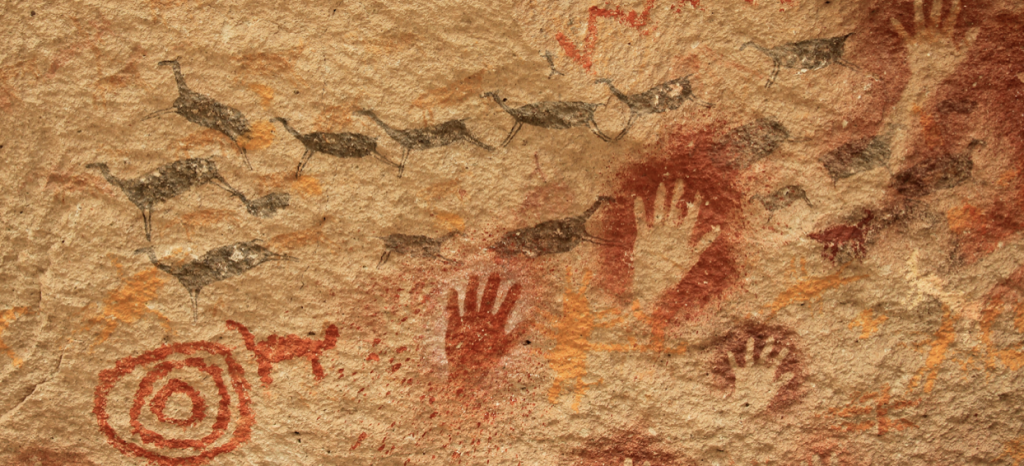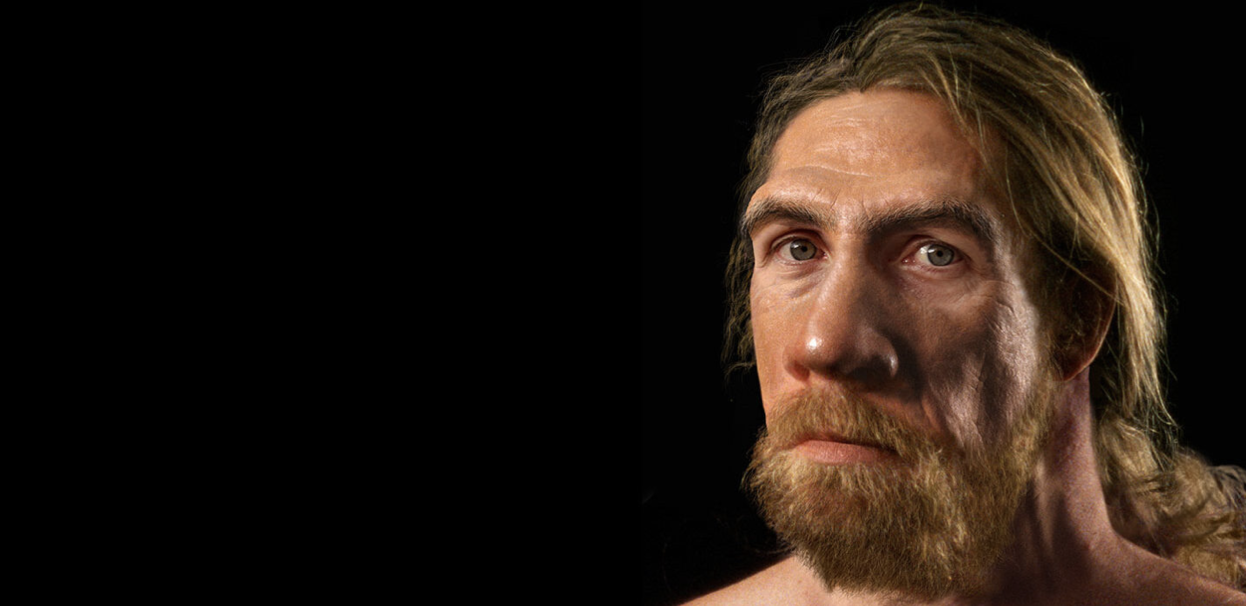You might have heard someone being called a “neanderthal”, as a form of an insult; however, research conducted by paleolithic archeologists in the 1990s suggested that our prehistoric cousins were a lot more nuanced in behavior than one would think. In recent studies, scientists were able to add to this claim by analyzing evidence left from the tools, bones and fibers of these early humans.
But for starters, what distinguishes Neanderthals from other primates? They are characterized by their “large nose, strong double-arched brow ridge, relatively short and stocky bodies.” The name, meaning ‘human from Neander Valley,’ indicates where the first identified Homo Neanderthalensis bones were found: in a small valley in Germany. This species is thought to have originated in Eurasia and lived from about 40,000 to 400,000 years ago. Though the cause is unknown, the species is thought to have gone extinct about 40,000 years ago.Currently, Homo sapiens are the only human species left in existence. Nevertheless, our genome is very similar to this species of early man, with Neanderthal DNA being 99.7 percent identical to modern human DNA. Many of this species’ fossils and artifacts have been found in caves, which is why the word “neanderthal” is synonymous with the word “caveman” for most laypeople. But many Homo sapiens also resided in caves, so is it fair to distance ourselves from our primitive cousins? As a matter of fact, as much as 60-70% of the species’ genome is found in living humans, according to Svante Pääbo, a Swedish geneticist and winner of the Nobel prize in Physiology.

To put things into perspective, our ancestors and Neanderthals went their separate ways over 400,000 years ago, resulting in genetic differences such as skull structure and the proteins that code for our genes. However, there are still a lot of similarities in the behaviors that are hard to ignore.
Not only did Neanderthals hunt animals and treat illnesses, but they also had a more artistic side that allowed them to create jewelry and cave-paintings.
A remarkable find was the one meter long wooden tools the early humans used to hunt animals, just like hunters in modern day use. What makes this find so remarkable is that wood tends to decay easily, but these tools were in almost pristine condition. The archeologist Biancamaria Aranguren explained that they were “soaked in thermal water,” which is why they have been preserved for so long. Another new insight is that the bones that were found show signs of previous injuries and illnesses, indicating that the species knew a thing or two about healthcare. These injuries weren’t fatal, which demonstrates their ability to treat their injuries. However, bones can show traces of disease but don’t show signs of a common cold because it is not enough to leave a permanent mark, which leaves gaps for us to understand the full picture. Back in 2018, prominent archeologist Paul Pettitt and his collaborators analyzed a series of wall paintings found in Spanish caves, as pictured below. The materials in the paintings are thought to be about 65,000 years old. These artworks indicate that Neanderthals had the capacity to depict concepts through art.

Like every species, Neanderthals deserve to be understood to an accurate extent and credited for their brainpower. Learning from prehistoric populations can give us modern humans a good understanding of our current genetics. As scientists continue to extract evidence from their genetic clues, fossils and artifacts, this knowledge will give us new insight on our common biology and rewrite the story of humanity more accurately.
Bibliography:
Connolly, Kate. “Svante Pääbo: ‘It’s maybe time to rethink our idea of Neanderthals’.” The Guardian. 12 Jan 2023.
https://www.theguardian.com/science/2023/jan/12/svante-paabo-interview-nobel-prize.
Hendry, Lisa. “Who were the Neanderthals?” Natural History Museum. 27 Jan 2023.
https://www.nhm.ac.uk/discover/who-were-the-neanderthals.html.
History.com Editors. “Neanderthals.” History. 17 Oct 2017.
https://www.history.com/topics/pre-history/neanderthals.
Joyce, Christopher. “Study: Neanderthals Wore Jewelry And Makeup.” NPR. 12 Jan 2010.
https://www.npr.org/2010/01/12/122466430/study-neanderthals-wore-jewelry-and-makeup.
“Neanderthals: the oldest art in the world wasn’t made by Homo sapiens.” Durham University. 17 Jan 2023.
https://www.durham.ac.uk/research/current/thought-leadership/neanderthals-the-oldest-art-in-the-world-wasnt-made-by-homo-sapiens/.
Pettitt, Paul. “THE OLDEST PAINTINGS EVER FOUND ON EARTH WERE NOT MADE BY HUMANS — RESEARCH.” Inverse. 22 Jan 2023.
https://www.inverse.com/science/oldest-art.
Piore, Adam. “Neanderthals Were Smart, Sophisticated, Creative—and Misunderstood.” Newsweek. 28 Dec 2022.
https://www.newsweek.com/2023/01/13/neanderthals-were-smart-sophisticated-creative-misunderstood-1769443.html.
Price, Michael. “Modern humans and Neanderthals may have overlapped, shared culture in Western Europe.” Science. 13 Oct 2022.
https://www.science.org/content/article/modern-humans-and-neanderthals-may-have-overlapped-shared-culture-western-europe.
Stevens, Alison. “Neandertals were a lot like our human ancestors.” ScienceNewsExplores. 19 Jan 2023.
https://www.snexplores.org/article/neandertals-human-ancestors-archaeology-tools-culture.
“Svante Pääbo Facts.” Nobel Prize. 27 Jan 2023.
https://www.nobelprize.org/prizes/medicine/2022/paabo/facts/.

